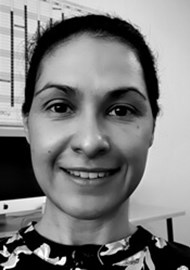The benefits of early detection and rehabilitation of hearing loss in children, especially through cochlear implantation, are unequivocal. However, access to these valuable resources is far from equal and universal. Identifying the barriers is the first major step in addressing the issue.
The World Health Organization (WHO) estimates that 278 million people in the world have debilitating hearing loss of greater than 45dB, with roughly 80% of these individuals living in poor, low- and middle- income countries (LMIC). Hearing loss in childhood can cause oral language and communication impairment, leading to adverse effects in educational attainment and behaviour.
In adults, hearing loss is associated with depression and social isolation and affects employment opportunities. Undoubtedly, a large percentage of these patients in LMIC have a profound loss that would benefit from cochlear implantation.
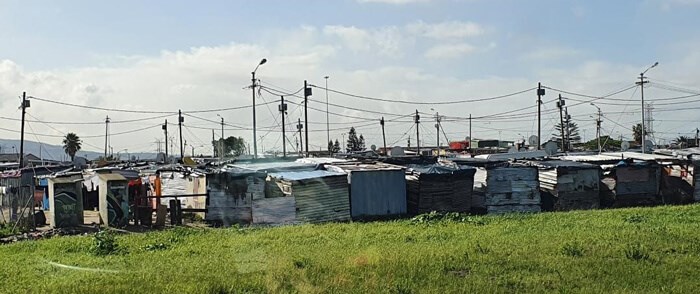
A typical informal settlement on the outskirts of the CBD in Cape Town. There are a number of issues
faced by informal settlements like insufficient access to running water, health and education.
While cochlear implants are a very cost-effective treatment for profound hearing loss in high-income countries (HIC), their implementation in LMIC is challenged by: lack or paucity of neonatal screening; device cost and device-related expenses; lack of rehabilitation services and access-related expenses; and lack of trained personnel (i.e. audiologists or ENT surgeons trained in cochlear implantation). Overcoming the above challenges is really the cornerstone of a successful and sustainable cochlear implant programme.
“While neonatal screening occurs routinely in most HIC after birth, in LMIC neonatal screening is very limited or non-existent”
While neonatal screening occurs routinely in most HIC after birth, in LMIC neonatal screening is very limited or non-existent. Resource constraints such as lack of equipment, lack of trained personnel and poor follow-up of babies identified with hearing impairment have been cited as some of the challenges encountered when implementing neonatal screening. The above notwithstanding, advances in non-invasive hearing screening tests such as otoacoustic emissions and automated auditory brainstem responses, which are quick and reliable and can be done effectively by well-trained non-audiologists without compromising their sensitivity, can help to overcome these challenges and ensure efficient use of resources.
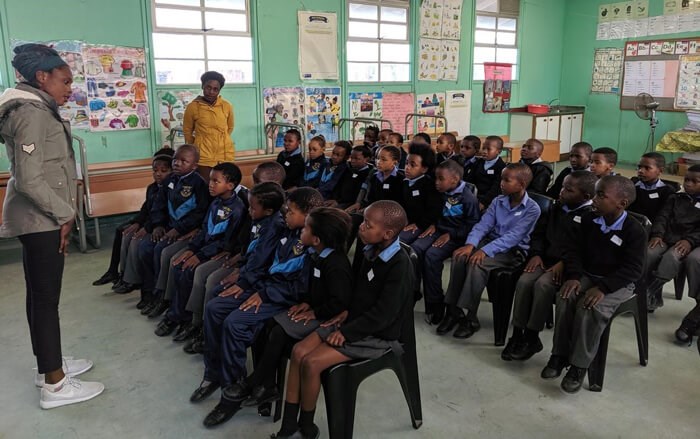
Testing efficiently is key to large scale screening efforts. Conditioning as a group (now with appropriate social distancing) is a key factor in doing so. Photo courtesy of J Zachary Porterfield, MD PhD, as part of a hearing screening partnership he developed between Amandla Development, the University of Cape Town, the Yale Alumni Service Corp, and the University of KwaZulu-Natal for hearing screening in school age children in Philippi (an informal settlement in Cape Town).
Rehabilitation post-cochlear implantation is absolutely crucial for good outcomes and can be challenging in rural settings where patients have difficulty accessing rehabilitation facilities. In countries like India, this problem was solved by having satellite centres in rural areas which overcame the need for families to travel long distances for auditory rehabilitation. In addition, telemedicine has also been used successfully to offer remote mapping and rehabilitation to patients who live far from cochlear implant centres.
The high cost of the implant, and device-related and rehabilitation expenses remain the leading prohibitive factors in LMIC. In contrast to HIC, cochlear implantation expenses in LMIC are largely patient self-funded, and this necessitates very careful consideration of a patient’s financial resources to fund the implant, batteries, maintenance and the subsequent rehabilitation.
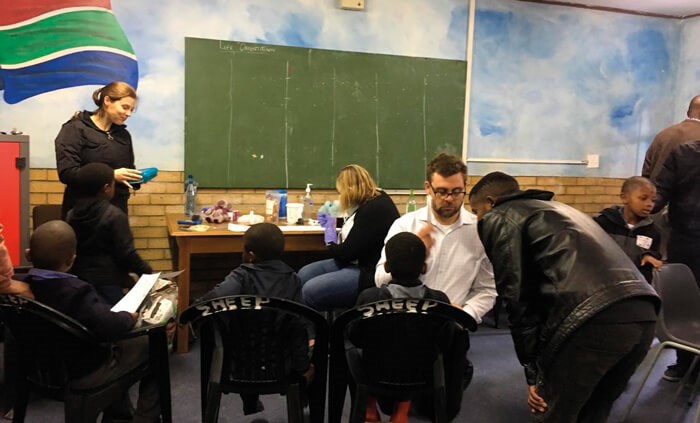
Screening requires flexibility and adaptability to new environments. Jessica McGuire, ENT Surgeon (University of Cape Town, Red Cross War Memorial Children’s Hospital) and Doug Hildrew, Neurotologist (Yale University), conduct onsite assessment of children undergoing hearing screening. Photo courtesy of J Zachary Porterfield.
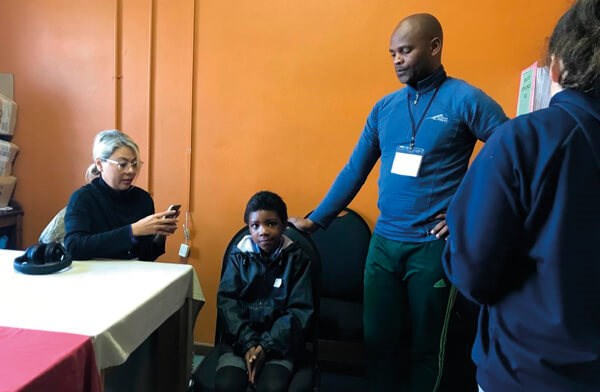
Amandla Development and Yale Alumni Service Corps volunteers conduct hearing screening using validated clinical smartphone audiometry under supervision. Photo courtesy of J Zachary Porterfield.
Hearing loss is often not prioritised in LMIC. A sustainable and ethical cochlear implant unit can only occur in the presence of a successful auditory rehabilitation programme where the needs of all types of hearing loss is addressed, as one cannot prioritise cochlear implants when access to hearing aids is limited.
“In countries like India, this problem was solved by having satellite centres in rural areas which overcame the need for families to travel long distances for auditory rehabilitation”
In order to serve the world’s population with hearing loss, sustainable and cost-effective access to cochlear implantation needs to occur on a worldwide scale. The obstacles are not insurmountable. All it takes is will.


